The course of football has taken some radical shifts. From a direct route style to a possession-based style, football has constantly evolved. One such evolution concerns the role of goalkeepers. Long gone are the days where the goalkeeper had a great size and “scary” demeanour. The role of goalkeepers have changed and perhaps the perfect example of the evolved goalkeeper is Liverpool keeper Alisson Becker. Coming in to replace the mistake-prone Loris Karius, Alisson ended up costing Liverpool 75 million Euros, a world record deal. Since then, Alisson has helped Liverpool win the most coveted trophy of them all: The Champions League trophy. In this tactical analysis, we look at how he was critical to Liverpool’s Champion League success through the use of various statistics and analysis.
Alisson’s statistical aid to Liverpool
Alisson is a keeper who has, linearly, gotten better at saving shots and conceding less. In his 2017/18 season at Roma, Alisson had an expected conceded goals (xCG) of 69.01. xCG relates how many goals a goalkeeper should be conceding over a period of games.
That season Alisson did better than expected, conceding only 53 goals. Even with these many goals conceded, Alisson helped Roma avoid 16 goals, an amount that can be a huge difference between a bad and good season.
In his 2018/19 season with Liverpool, Allison recorded expected conceded goals of 48.71. This may be because at Liverpool, Alisson got better midfielders and defenders such as Fabinho and Virgil van Dijk, respectively. However, if it weren’t for Alisson’s big saves, for example, the ones against Napoli in the Champions League, Liverpool wouldn’t be at the stage where they are right now.
It is important to contrast Alisson’s performance with his predecessor, Karius. While it is certainly a shorter example, out of 35 Champions League and certain Premier League matches, starting in July of 2017 and ending in May of 2018, Karius had expected conceded goals of 25.07. He performed worse than his expected conceded goals, actually conceding 31 goals.
This improvement in terms of conceding goals, statistically, is one big reason for how Alisson has contributed to Liverpool’s success in the Champions League. While the statistics showcase the impact of Alisson on Liverpool, it is also important to dissect into the tactical nature of his impact.
Alisson aims to surprise opponents with special distribution technique
One of the elements in Alisson’s skill set is his ability to surprise. In a world where tactics are becoming more and more possession based and automatisms are getting instituted, it becomes essential for a team to have some sort of surprise.
Unexpected play foils the opponent’s game rendering an isolated (or a small group) player to deal with the situation on his or her own.
One of the ways Alisson brings surprise and unexpectedness in his game is his quick ability to spot free players on the wing flanks. Liverpool, as a team, fixates one of its attacking plans on counter-attacking football. Counter Attacking football is swift, direct, and, more times than not, creates numerical superiority for the team involved.
One of the ways Alisson institutes surprise into his distribution is through body language and long balls. Often, Alisson will face laterally. Through this, the opponent understands that Alisson is about to put the ball down and pass to his centre-backs. This implication is further emphasized by the proximity of Joel Matip and Van Dijk near Alisson.
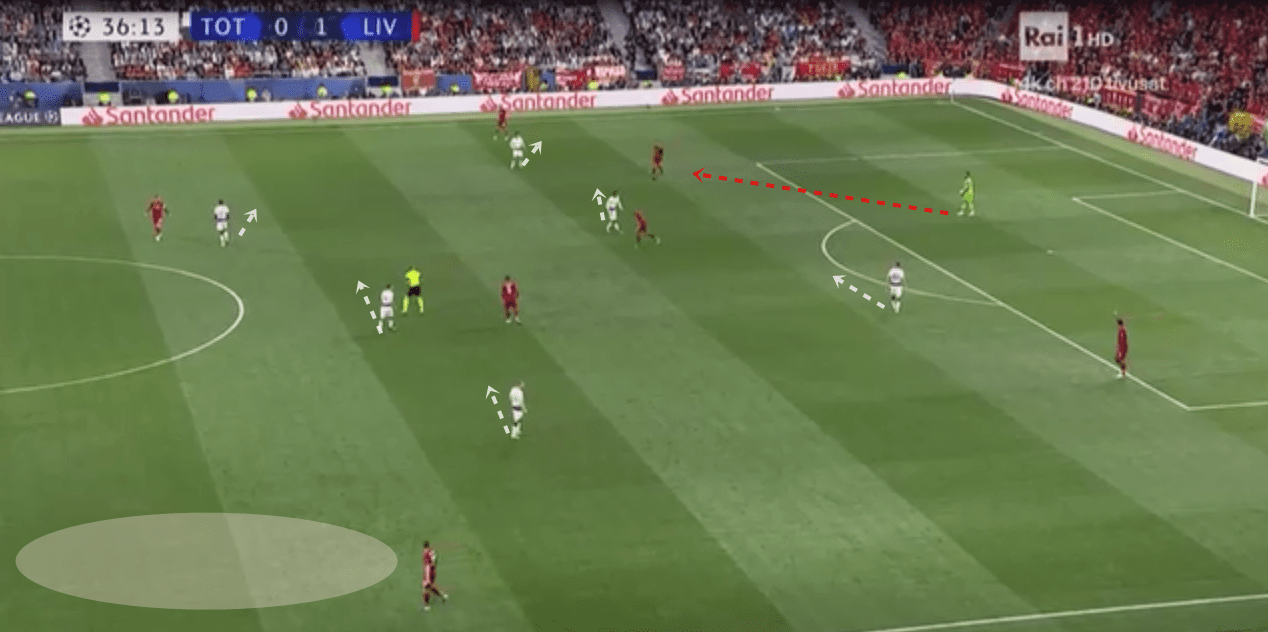
In a switch, however, Alisson uses his lateral positioning to launch a diagonal ball. As a right-footer, most of these diagonal balls are directed towards the left wing flank. This suits Liverpool’s game plan as it allows two Liverpool players, Sadio Mané and Trent Alexander-Arnold to double up against an isolated fullback or a fullback and midfield.
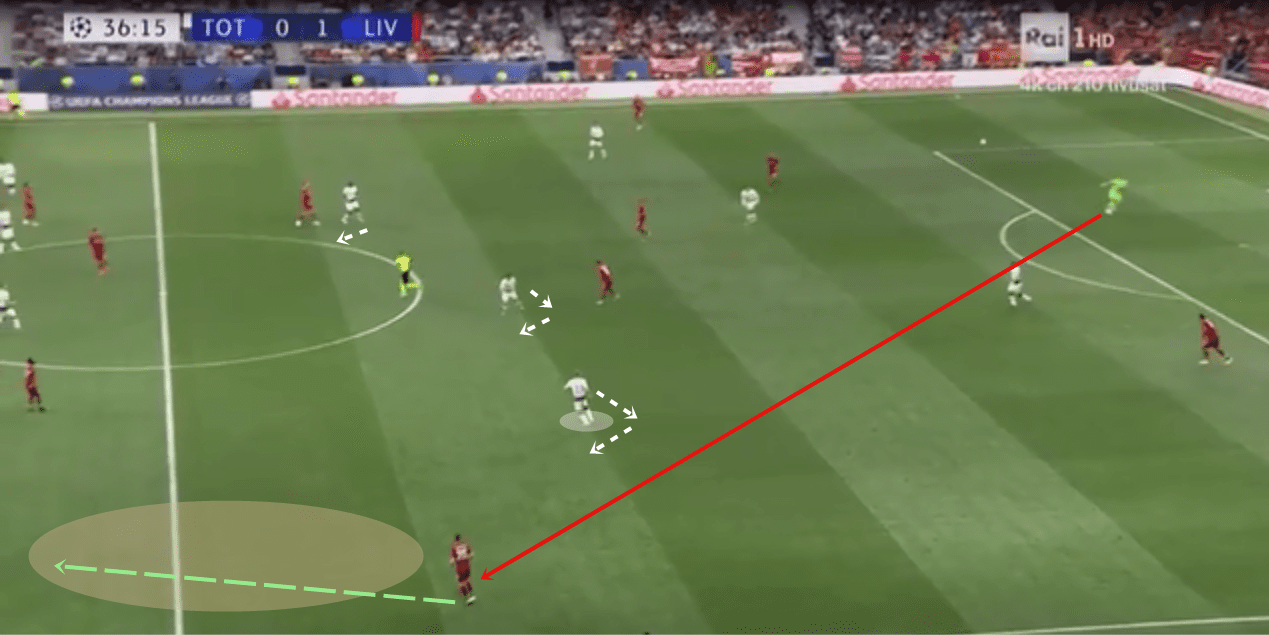
Alisson’s deceptive pass gets past a block of six Spurs players. This type of ingenuity was previously absent in Karius’ game. Notice how midfield of Spurs have to not only backtrack but also shift their positioning to the left (both movements shown in white). These movements allow for the creation of space for the Liverpool midfield.
Alisson’s deceptive pass works because by having a lateral body posture, he can generate more power which compensates for him not directly looking at the player he wants to pass to.
These type of diagonal balls are important as these balls get past five to six opposition players in an instant. Due to the nature of diagonal balls, the formation of the opposition shifts vertically and horizontally. These small shifts mean that, for an instant, there might be holes present between the opposition defence.
Allison’s general patterns in long and short range distribution.
Alisson’s tendencies in his long balls are most similar to Manchester City’s Ederson patterns in long balls. Like Ederson, Alisson looks to strike the long ball straight to the defence. Most of the times, this long ball will be a diagonal ball towards the wing flanks.
The locations of Alisson’s long balls are interesting. Per Liverpool’s strategies, Alisson’s long balls are normally diagonal balls and are aimed at the halfspaces or the wing flanks. However, when compared to other goalkeepers, who are at the same level, Alisson’s locations are in contrast
For example, Marc Andre Ter Stegen’s long balls are often straight balls that are directed in the central corridor and halfspace. Ter Stegen’s long balls do not arrive at the very end of the defence. They normally land near the half-way line, to the fullbacks, or in the centre, to either the striker or midfielder This is due to Barcelona’s playing style.
Similarly, Jan Oblak, for Atletico Madrid, launches his long balls right to his fullbacks or to the midfielders in the halfspace. Oblak, very rarely, makes long balls right to the wingers or straight to the opposition’s fullback. This is due to Atletico’s use of a 4-4-2 which emphasizes hard working players and wing play.
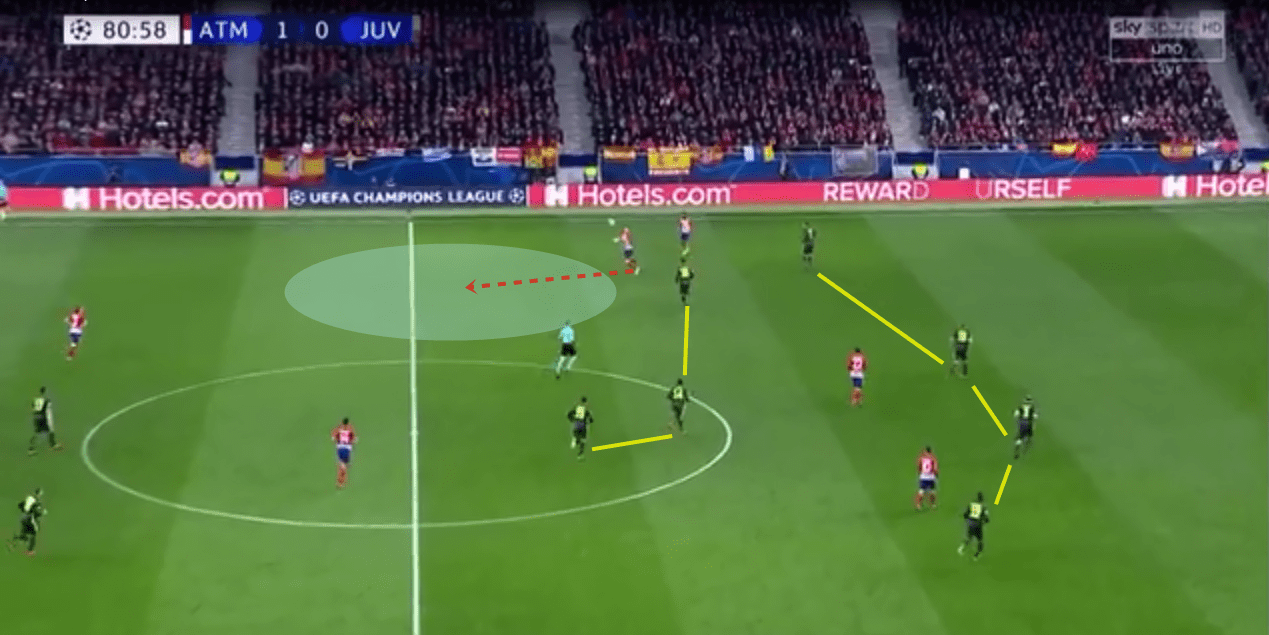
Here we see that Oblak’s long balls have gone straight to a midfielder who is in the halfspace. Unlike Alisson’s long balls, Oblak’s long balls are not disrupting the opposition’s formation as seen with the structured defensive and midfield line
Unlike traditional goalkeepers, Alisson’s formatting of long balls, when the ball is in his hand, is to throw the ball in front of him. He will, then, kick the ball midair to his intended location. This is quite different from traditional goalkeepers who like to place the ball on the ground and kick from there.
One of Alisson’s patterns in goalkeeper distribution involves getting past the striker. With the ball at this feet, he will wait till the striker gets close to him. Alisson will let the striker get close to him such that there is a gap between the striker and his teammates. When the gap is noticeable, Alisson will often opt to pass to the wide full-backs. This type of short distribution serves multiple purposes.
The first one is that one opposition player is beaten. This means in the build-up of Liverpool, they will have to face a block of three. This block of three means that there is numerical superiority for Liverpool which allows them to free a player and break the opposition lines.
Since Alisson passes to the wide full-backs, it will attract the remaining opposition players. Since there is already one less, the full-back can easily find a close midfielder or play a long ball to the forward winger.
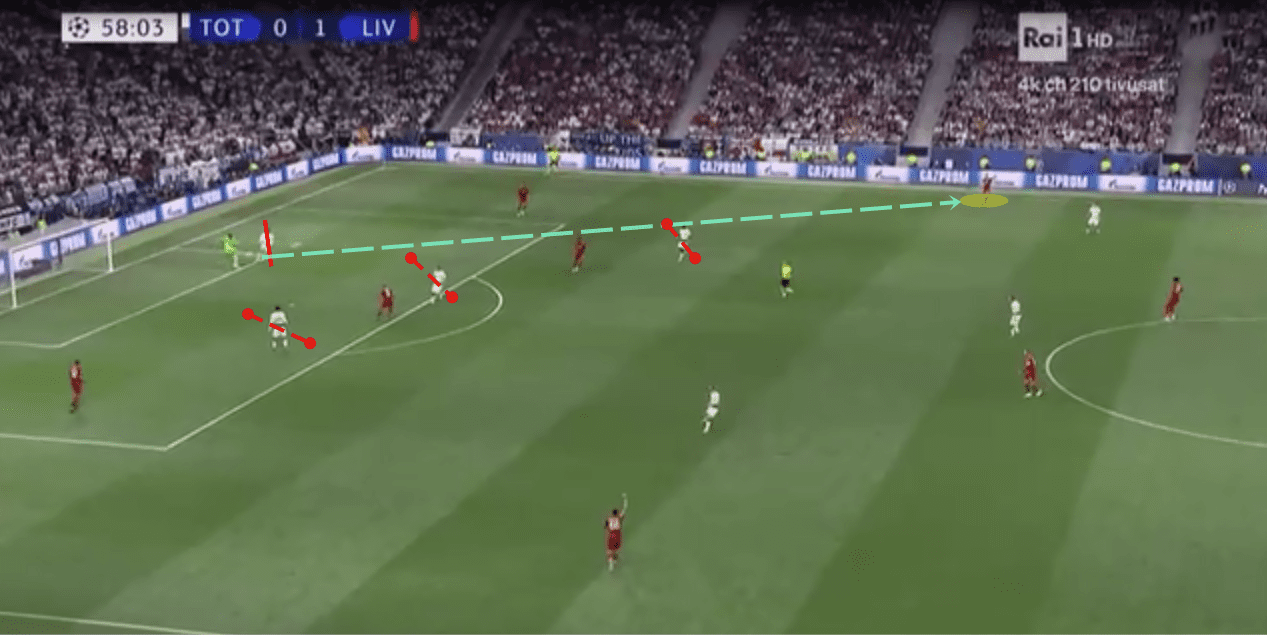
As shown in the picture above, Alisson gets past the striker. This eliminates one of the players in the opposition press. Moreover, three other players in the press, shown in the different red line, are also beaten. Alisson also finds the wide full-back who can take on the nearby midfielder and start an attack by pairing up with the nearby winger.
The principle with this pattern is that Liverpool become one step more effective at beating press and therefore, any attempts to high press will lead to an opportunity for Liverpool to attack the opposition’s spaces.
Alisson’s helps Liverpool’s buildup through positioning
Another element to a goalkeeper’s game is for him or her to involve herself in the team’s buildup and counterattacking purposes. This responsibility to do so intensifies when one considers Liverpool’s possession-based game style.
As such, Alisson is well versed in the art of possession-based football. In the 18/19 season, Alisson played a total of 1062 passes with an accuracy rate of 97.9%. Evidently, Alisson is no stranger to an extension of possession-based football: build-up.
To help Liverpool’s build-up plan, Alisson tucks into his goal area and stays in the middle. This deep and median positioning allows for greater efficiency as the centre backs can stay wider. Alisson’s deep position creates a greater angle between the centre backs. This is important as the centre backs can attract one to two opposition attackers.
From there, a simple pass to Alisson results in various opportunities for Liverpool to get past the opposition. Alisson can utilize, as discussed before, his long passing abilities and directly target the wingers. Or Alisson can play a chipped ball to the wings or the middle as there are, now, two fewer opposition players in Liverpool’s half
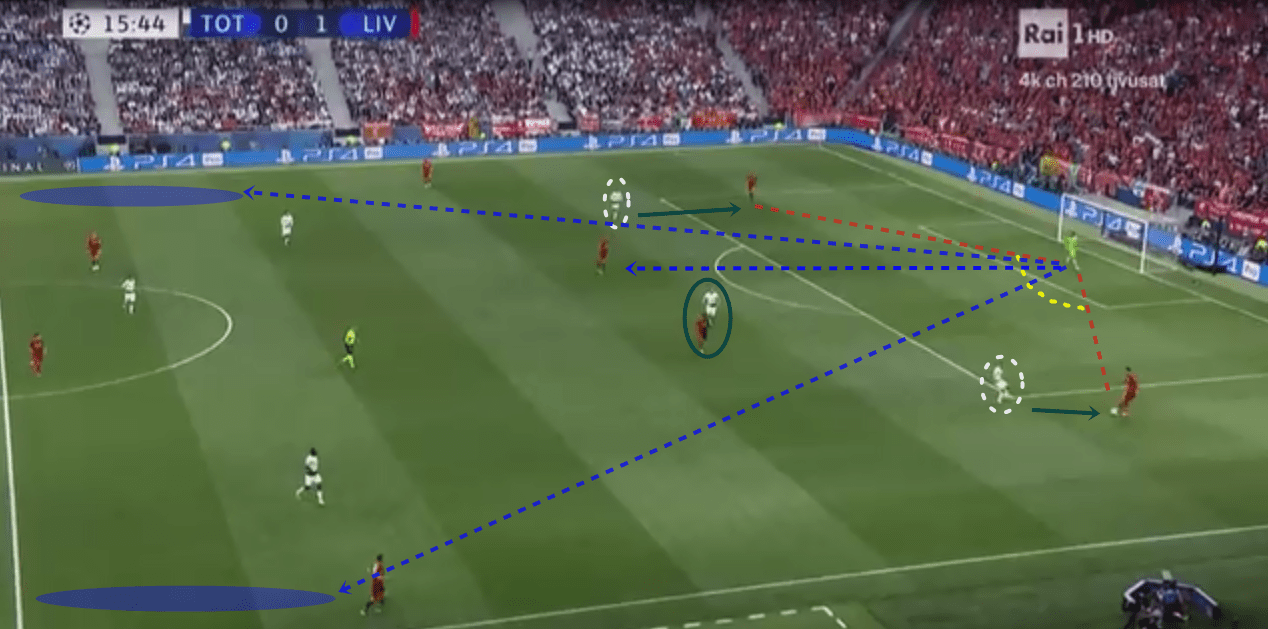
The first thing to note here is the angle between the centre backs and Alisson. Since the angle is obtuse, it means that centre backs can easily find a pass to the fullback. To stop this, the two Spurs forwards have no choice but to press them.
Alisson is deep and in the middle of the penalty box. This means that the forwards have to come in deeper as the centre backs are almost level with Alisson’s position. This means that huge spaces are vacated between them and the midfield line.
Moreover due to Liverpool’s pivot, one of the forwards has to take one of the midfielders. Due to this, one midfielder gets free and Alisson’s deep positioning means that he can easily pass to the free midfielder.
Additionally, since he is quite a length away from the attackers, he can easily make long, diagonal balls to the wing flanks. These passes will land in spaces (shown in blue) near the wingers. These wingers can use this to directly attack their respective fullback
Alisson’s technique in saving shots and exiting his line
One of the main strong points of Alisson is his strong reflex. Alisson’s use of reflex is one of his main techniques for saving shots. This season, out of 5625 minutes, Alisson has faced about 177 shots. Out of those 177 shots, he has saved 139 shots. This gives Alisson a save percentage of 78.5%. Out of the 139 shots, 48.2% of those shots have saved with a reflex. That is almost half of his saved shots.
This trend has not been started with Liverpool. Alisson, with Roma, saved 202 shots out of the 255 he faced, giving him a save percentage of 79%. Additionally, 49%, of the 202 shots saved, were saved through reflexes.
The question arises: What does Alisson that enables him to be so good in saving shots with reflexes?
One of the first actions that Alisson takes involves closing down the angle. Interestingly, Alisson does not come off his line as frequently as his predecessor had. In the 2018/19 season, Alisson had 53 exits. On the other hand, Karius, in just half the time of the 2018/19 season, had 44 exits.
This statistic gives us an indication that Alisson is more concerned about waiting for the right moment to exit rather than his predecessor. This waiting has to be done with the correct timing, however. If Alisson waits too long, the angle for him to cover becomes impossible. If Alisson jumps in early, as Karius did, he risks the chance of being rounded or chipped.
One of the cues that Alisson uses is the player’s control of the ball. Rarely is a player, when he or she is one on one with the goalkeeper, will be stable. As such, whenever Alisson sees that there is a misstep from a player or the player’s head is over his centre of gravity, Alisson will start exiting his line.
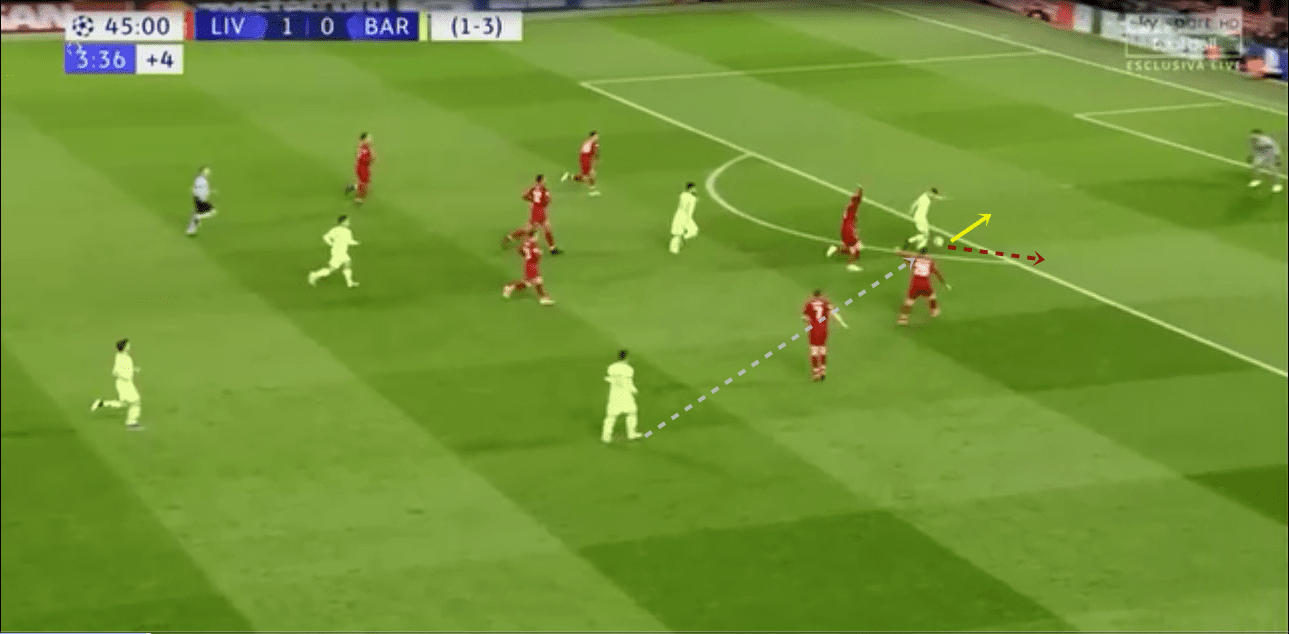
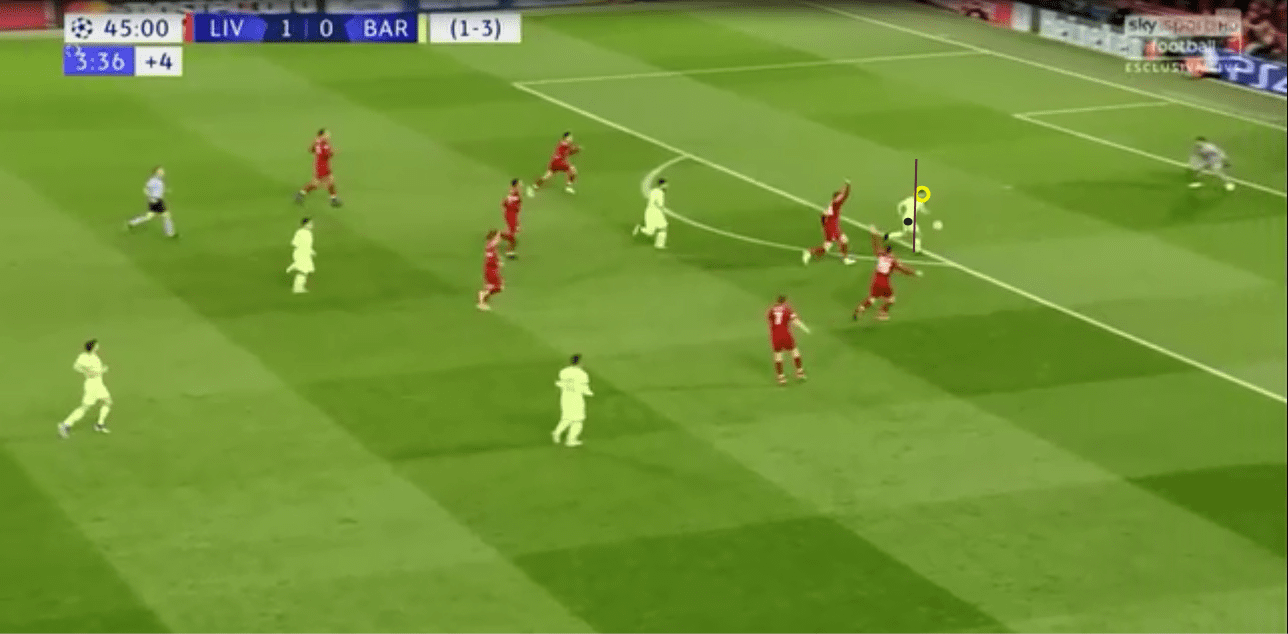
As shown in the first picture, Alba’s bad touch made the ball unstable as it was bouncing while his poor body posture meant that he would not get enough power to slot the ball past Alisson. As such, Alisson considers both cues and starts his running.
Another technique that Alisson utilizes is, quite literally, putting his body on the line. His predecessor, and other goalkeepers, often have a habit of exiting and coming forward with a slanted body posture. While this does ensure safety for the goalkeeper, it allows the scorer to have an open shot on goal on the opposite side of the slant.
Alisson fixes this by opening up his entire chest region towards the attacker. Apart from a psychological advantage, it also allows Allison to close up any other gaps he might have had near him. Moreover, with an open body, there is more surface area for him to block the shot with, regardless of the pain.
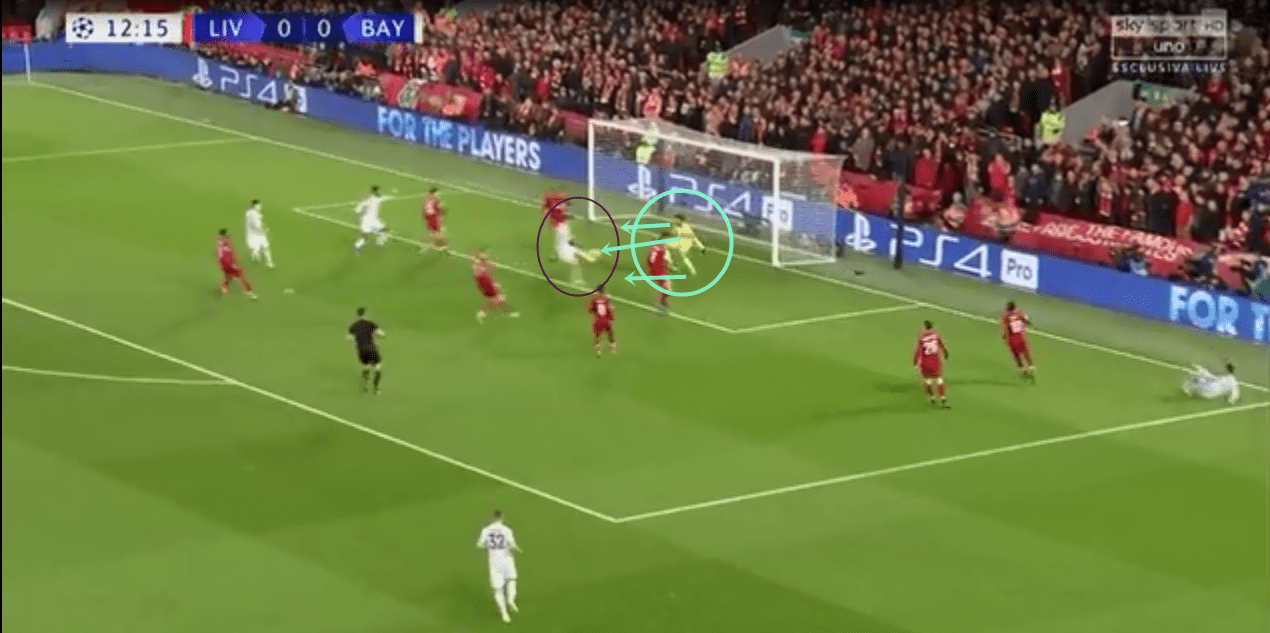
Here we see that Alisson’s head, torso, and legs are all facing Lewandowski. This means that any split second touch by Lewandowski is more likely to hit Alisson’s “big wall”. He is also able to close down the angle of Lewandowski, restricting him to the left side, from Alisson’s perspective, of the goal.
Another one of Alisson’s cues to exit his line is when he sees the space between centre backs is too big. This type of space is usually created through switch crosses. These are crosses are when a fullback or a winger runs and passes back to an available player. That player then makes a cross to the far post from his side. These type of crosses make a gap between centre backs.
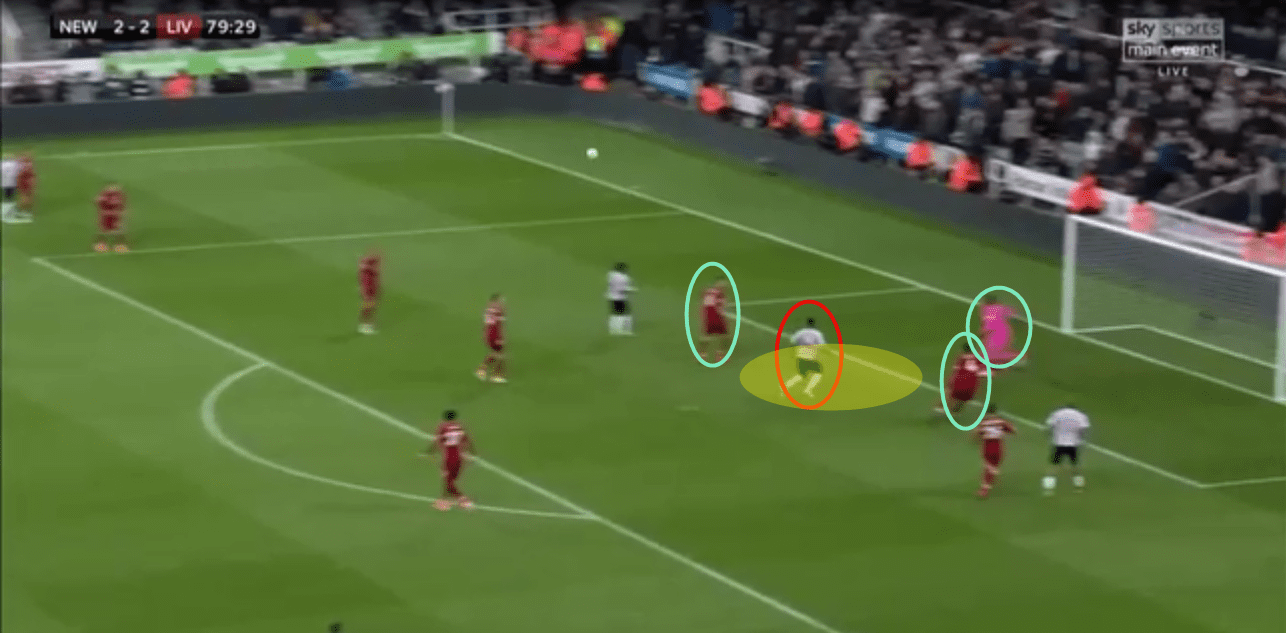
In the above photo, Alisson’s presence in the yellow space creates a 1v1 situation with the goalkeeper. His presence creates a 3v2 in that space, thus allowing for numerical superiority which ensures that the striker will have a hard time scoring. Alisson exiting his line also limits the space the striker he can head into.
Conclusion:
It is evident, through the statistics and the tactics, the improvement that Liverpool have had. With Alisson, they have gotten themselves a goalkeeper that is comfortable in beating presses single-handedly, starting counterattacks with surprises, and saving shots with great precision and patience. It is no wonder that Liverpool boasted the second best defence in the Premier League with only 22 goals conceded. While some might say it is due to Liverpool’s refinement as a squad, one should not count out the tremendous impact of their goalkeeper who helped them achieve that goal and win the Champions League.
If you love tactical analysis, then you’ll love the digital magazines from totalfootballanalysis.com – a guaranteed 100+ pages of pure tactical analysis covering topics from the Premier League, Serie A, La Liga, Bundesliga and many, many more. Buy your copy of the May issue for just ₤4.99 here, or even better sign up for a ₤50 annual membership (12 monthly issues plus the annual review) right here.

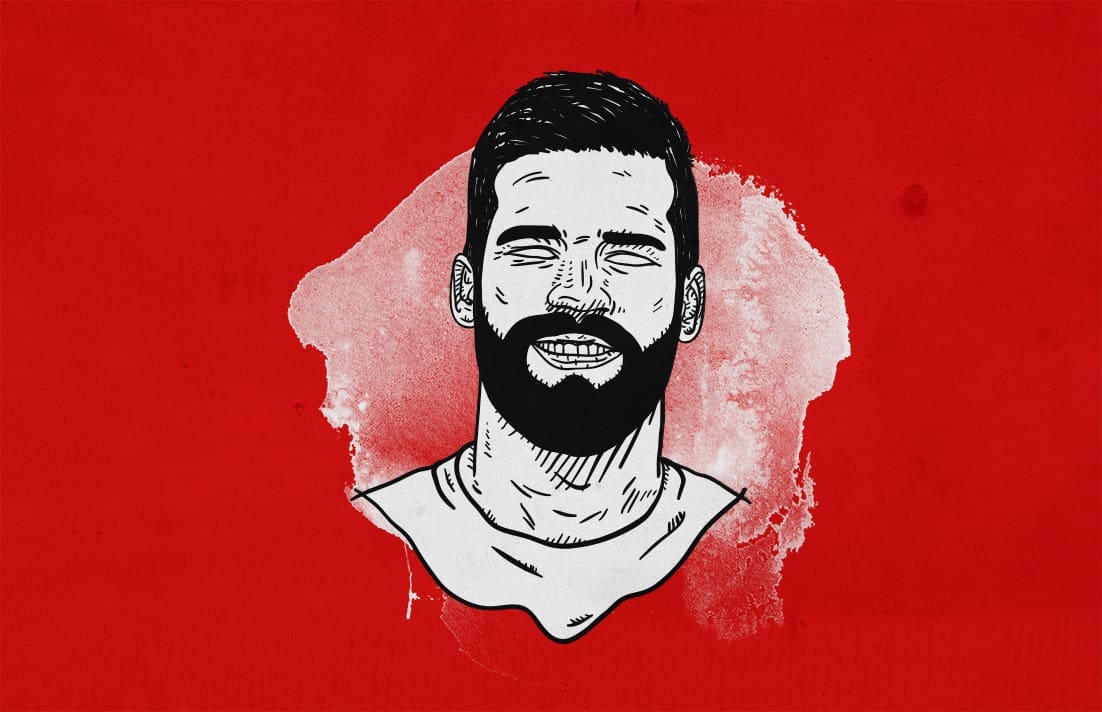



Comments